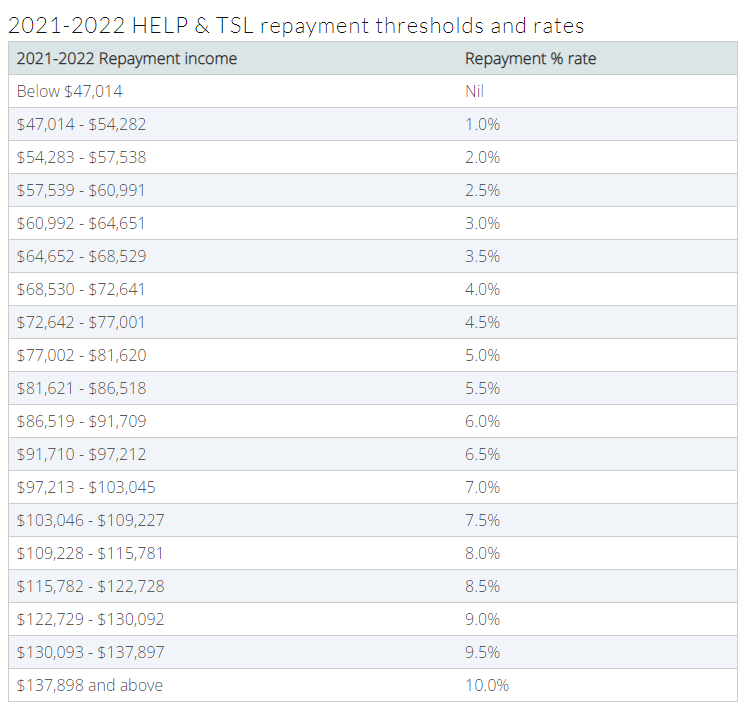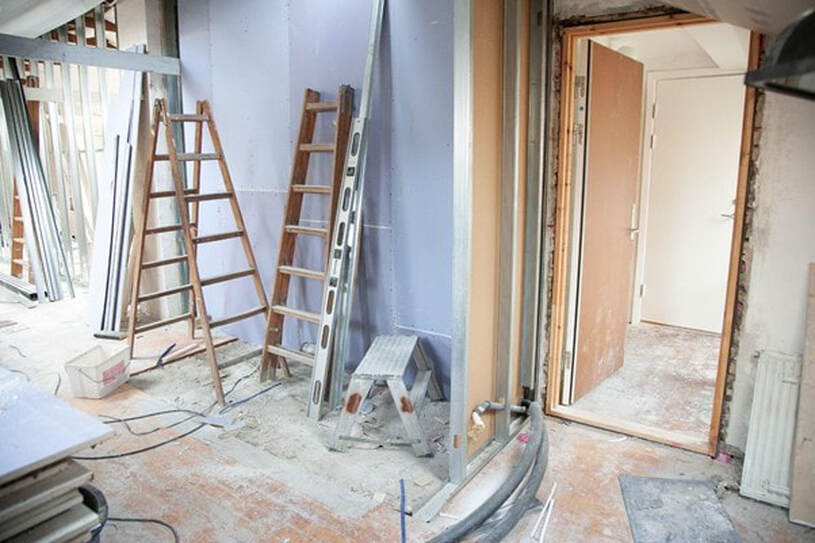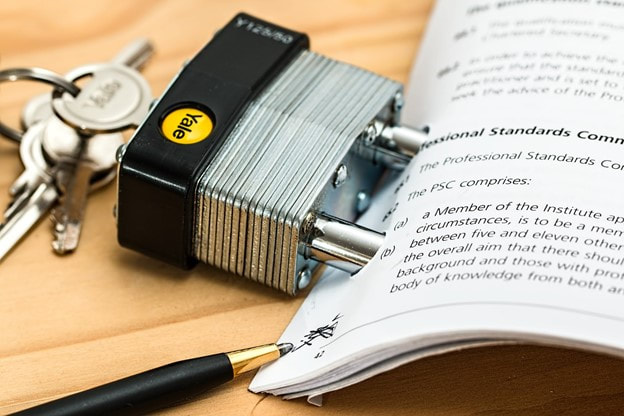|
For borrowers trying to save money on their home loan, it might be worth looking at the frequency of your repayments.
A small change from monthly to weekly might not make much of a difference to your household budget, but it could go a long way to cutting down your interest over the life of the loan. The most important thing to know about home loans is that interest is calculated on the daily balance and charged to the loan account monthly in arrears. If you take the minimum monthly repayment and pay half every two weeks, borrowers can save a significant amount off both the term and interest. There are 26 fortnights in a year – the equivalent of 13 monthly repayments rather than 12, meaning you’re actually paying more than the minimum. If borrowers choose to pay weekly, they could save more on interest but not so much on the term. While many people are excited about the idea of buying their first home, it can also be overwhelming knowing that you have to eventually pay off a large mortgage.
The good news is that with some simple strategies, there are ways to pay off your home loan faster than expected. Borrow less than you can afford It’s important to have a very clear understanding of what your financial situation is going to look like once you’ve taken on a mortgage. If you’re struggling to qualify for a home loan, then an option is to simply purchase a cheaper property. While you might not get into your dream suburb straight away, as your equity position improves you can use that to move forward and upgrade. In addition, a more affordable home would mean you can pay down your debt faster. Increase your repayment frequency Most lenders will typically put you on monthly mortgage repayments. While this might be convenient, it might not be the most cost-effective option for you. If you increase your repayment frequency to fortnightly or weekly, you will end up making more repayments over the course of the year and be paying down a higher amount of debt. There are only 12 months in a year, while there are 52 weeks and 26 fortnights. That means your loan gets paid off faster and you’ll also be saving interest along the way. Along the same lines, you also have the option of increasing your repayments. You don’t have to simply pay down the minimum each month. The more you can pay down that principal component the better. Use an offset account These days, there are several home loans that come with useful features that can help save you money on interest. An offset account is one such tool. This feature operates like a transaction account, however, it is linked to your home loan account. Your total interest repayments are calculated based of the value of your home loan, less the funds in your offset account. This means the more money in your offset account, the less interest you’ll pay. In turn, you can use those extra funds to make higher repayments on the principal loan. If your current home loan doesn’t come with an offset account or lacks the flexibility that you need, it might be worth speaking to a mortgage broker to compare your options. While most people will typically look to take out a variable home loan, it is first worth considering what might happen with interest rates in the future and whether that means you should think about a fixed-rate home loan.
A fixed-rate home loan simply means that the interest rate on the home loan is fixed for a certain period of time. For most fixed-rate home loans, that is going to be around two to five years. However, there are a number of other factors that you need to consider apart from just the fixed interest rate. Advantages The main advantage of a fixed-rate home loan is that with a set interest rate, you will have a degree of certainty around your weekly and monthly repayments. If you have budget constraints, then fixing your home loan might be an option so you know where your finances stand each month. However, if you believe interest rates are going to rise in the future, it might be worth looking at locking in a fixed-rate loan. This will ensure your repayments remain at their current level for the term of the loan, regardless of what happens to underlying interest rates and changes from the RBA. Disadvantages While it is good to have certainty around your repayments, one of the big disadvantages of a fixed-rate home loan is the lack of flexibility. If you take out a fixed-rate loan and want to change out of it or refinance, there are likely going to be higher break costs involved than with a simple variable loan. Also, a number of the features that can save you a lot of money, such as offset accounts and redraw facilities, are typically not available on fixed-rate home loans. While you might save money with rising rates, you could have potentially saved even more if you’d had a superior loan product with more features. In the current environment with record-low interest rates, there are numerous home loans with very attractive introductory offers. If you qualify for a home loan with an introductory rate, that might be a better option than going with a fixed-rate loan. It would be more flexible, and the net result could be very similar. Finally, it’s also worth noting that actual rates that come with fixed-rate loans are often a reflection of where banks and lenders believe interest rates are headed. If fixed-rate loans have higher interest rates than comparable variable rates, it suggests lenders believe rates will rise. Even if you take out a fixed-rate home loan, your repayments might still end up being more, even if interest rates and your repayments would have risen with a variable home loan. If you like the idea of having some certainty, but you’re still not convinced about a fixed-rate home loan, then it is possible to fix a portion of your loan. That way you can get the best of both worlds. Be sure to contact your mortgage broker to discuss your options. See your home loan options in less than 5 minutes In the current economic climate, low interest rates are not just a bonus - they are expected. Fortunately, if you are working with a mortgage broker, they will be able to help you get the very best deal you can and that will mean you will be receiving the very best interest rates on your home loan. So how do you actually go about getting a lower interest rate? Ask for a Better Rate As simple as it sounds, if you feel you could be getting a better rate, you might simply be able to ask for one. If you’ve been with a lender for a long period of time and have a great track record of making your repayments on time, they won’t want to lose you. That gives you some power to go and ask for a better rate. In many instances, lenders will incentivise new borrowers with low rate deals for a period of time. Your mortgage broker might be able to help you get a better rate simply by asking them for the same type of deal new borrowers are getting. Be a Borrower Banks Love If you want to negotiate lower rates or even refinance, you need to be someone that banks will happily lend to in the first place. There are a number of factors that might make your loan application far more appealing than other borrowers. This might include, only asking for a lower LVR - this means your loan is a far safer proposition. Have a strong employment history. If you’ve been in the same job for many years and are in a permanent position, banks are going to be very happy to lend. Lenders are assessing the risk that you are going to pay them back, so having steady employment is a key indicator for them. You will also need to have a good credit history. A track record of payments made on time with no defaults is vital to get the best possible rates as any blemishes on your credit history will severely impact your application, let alone your negotiating power. Walk Away The reality is that refinancing is a real option for most borrowers and one they should strongly consider. If your bank is not prepared to budge, it might be worth looking elsewhere and walking away. If you are a borrower that banks love and you’ve already asked for a rate cut, then you should really be looking at your options. Your mortgage broker is always going to be your first port-of-call and they will be able to quickly and easily assess your options and match you with the right type of loan and the best possible interest rate. The days of sticking with the same lender for 30 years are long gone and it is important that all borrowers are constantly hunting for the very best deal they can find - especially when it comes to interest rates. See your home loan options in less than 5 minutes As the price of property surges across Australia, so does the cost of getting into the property market for many first home buyers.
For the most part, if you’re wanting to get a home loan from a bank or lender, they will require you to come up with a deposit. Depending on the lender, this can be anywhere from 5-20%. With house prices continuing to climb, many first home buyers get stuck in the trap of trying to save money for a deposit, only to watch house prices increasing in value and leaving them behind. Fortunately, there are ways first home buyers can get into the market more quickly and with a lower deposit to ensure they don’t miss the opportunity to enter the market. One of the most popular options for many first home buyers is to use a ‘Family Guarantee’ or ‘Guarantor Loan’. A family guarantee effectively uses the equity in another person’s property to account for a portion of your deposit. The most common situation is when parents use the equity in their home to help their children buy their first home. In practice, it is possible to use the equity in a family member’s home to cover the 20% deposit for the purchase of a property. The balance of the loan is then secured against the property you are buying. It’s also worth noting that the person or persons that act as a guarantor can limit their guarantee to only that portion of the loan. In the example of parents putting up the 20% deposit through their equity, they would not be liable for the full value of the property. However, this is something you should speak to your mortgage broker about. When you use this type of strategy, it is possible to effectively get a high loan-to-valuation ratio (LVR) without the need to pay lenders mortgage insurance (LMI). LMI is a form of insurance that is in place to protect the lender, and the borrower is required to pay it when they are borrowing more than 80% of the value of the property. LMI can run into the tens of thousands of dollars and is a significant cost that borrowers need to manage if they intend to access a loan with an LVR above 80%. The other advantage of using a guarantor-type loan is that first home buyers are still able to access the various first home buyer grants. For many first home buyers, the ability to access the various grants and also be exempt from stamp duty is the real reason why they are able to get into the property market. In recent times, first home buyers have been able to access other programs such as the First Home Loan Deposit Scheme (FHLDS), which operates in a similar manner and where it is the government that effectively helps guarantee higher LVR loans. However, there are price caps on the properties you can purchase, and the program is limited each financial year. While using a family guarantee is a great way for first home buyers to get into the property market, it is still not without its risks. The guarantor is putting their property at risk should the borrower default on their payments. It is vital that you speak with your mortgage broker and get professional advice before deciding to go down the path of using a family guarantee or guarantor loan. See your home loan options in less than 5 minutes The vast majority of people who look to purchase property will do so with the help of finance.
If you need to use finance to purchase a property, then you certainly need to include a ‘subject to finance’ clause in your offer. A subject to finance clause is a condition that is attached to the offer which effectively means the transaction will go ahead if the buyer is able to get finance for the purchase of the property. There are also other common conditions that most buyers will use on the purchase of a property, including being subject to a building and pest inspection or subject to a satisfactory valuation. These are all measures that are put in place to protect the buyer to some degree, most of which are considered standard and aren’t likely to impact the strength of your offer. How Does a Subject to Finance Clause Work? It’s always a good idea to speak to a mortgage broker well in advance of putting an offer in on a property. In reality, it is best that you have also taken this one step further and received a pre-approval from a lender. This not only gives you the confidence that you are going to be able to get finance on a purchase, but it will also give you a very clear indication of how much you can actually spend - including all acquisition costs. A pre-approval can also make your offer stronger in the eyes of the selling agent who is ultimately paid when the transaction goes through. It is also important to understand that a pre-approval isn’t a loan. You still need to make an offer subject to finance and will also need to receive a satisfactory bank valuation - which is why these two conditions go hand-in-hand. Each state has slightly different procedures in place around the offer and acceptance process, with some that are heavily focused on using auctions over private treaty sales. While some states also have cooling off periods. If you put in an offer that is subject to finance and you are running out of time to secure your finance, you will need to get your solicitor to inform the sales agent in writing to get an extension. If you don’t, you could potentially lose your deposit. Finance is arguably the most important part of the property buying process because without it you can’t move forward. Being organised and getting pre-approved will put you in the strongest position to acquire the property you want and to make sure the transaction goes through without a hitch. Even if you don’t have any loans or debts, having a credit card might be enough to significantly reduce your borrowing capacity.
The reason why a credit card can be a hindrance to your ability to borrow money, is that lenders assess your credit card on the overall limit, not on how much you currently have in credit card debt. Even if you’ve never reached your credit card limit since you’ve had the credit card, many lenders will assess a credit card as if it is maxed out. For example, if you have a credit card with a limit of $10,000, the lender is likely to assess your debt based on around 3% of this total amount per month. This monthly amount, which in this case would be $300, is added to your ongoing expenses, with the result that your overall borrowing capacity is reduced. With a credit card limit of $10,000, that could mean a $75,000 reduction in borrowing capacity, which is significant and can quickly limit the number of potential properties a first home buyer has access to. Assessing Your Situation Lenders do not only focus on what your credit card limit will do to your borrowing capacity. They also take other factors into consideration! One of the most important elements of any debt, in the eyes of a lender, is your track record of making repayments. If you continually miss payments and increase your debt levels, that doesn’t bode well in the eyes of a bank. Similarly, if you are living off your credit card, and are one pay cheque away from not just missing a payment, but also missing your rent, then that doesn’t make you look overly appealing in their eyes. It is important to understand that, with the implementation of Comprehensive Credit Reporting (CCR), lenders have incredibly detailed data on your spending habits, drilling down to how early or late you pay off your debts, or other bills. Credit Cards Are Not All Bad Now that we understand the impact credit cards have, it’s also important to note, that having a credit card is not necessarily a bad thing in the eyes of a bank. As mentioned, how you manage your credit cards is far more important than the fact that you have them. Lenders like to see that you are responsible with money. In fact, if you have a credit card and manage the credit very well, you will be looked upon far more favourably than someone who doesn’t have a credit card at all. Whether or not you get rid of your credit cards to help you get a home loan really comes down to a few key factors.
If you’re reliant on your credit cards, take a step back and assess your personal financial and living situation and get that in order before you start the home loan application process. House prices across Australia are continuing to see a sharp rise, and that can make it very tricky for buyers. Clearly, most states are in the grip of a seller’s market, so it’s important to both adjust your expectations and know how to buy when prices are rising.
Have finance organised Arguably, the most important element of buying a property during any market is to make sure you have your finance organised. However, when markets are rising, you not only need to know how much you can spend, but you need the confidence to be able to act quickly. As prices move higher, we also see the time it takes to sell a property, fall dramatically. As a buyer, if you have a preapproval in place, you’ll be able to make an offer early and have the confidence that your finance won’t be an issue. Look at all options Most Australian’s like to browse the real estate portals and then attend open homes on the weekend. Unfortunately, when markets are hot, you need more options, or you’ll be stuck fighting over the few properties that are actually listed for sale. One of the most effective things you can do is get on the email list of the leading agents in the suburb or suburbs in which you are wanting to buy. Sales agents often let people know about upcoming listings, and if you are confident and prepared, you might be able to make an offer before the listing ever sees the light of day. Do your research When markets are moving, it seems as if every property is selling well above its asking price. It is incumbent upon you, the buyer, to understand where the market is at in your area of interest, and the best way to do that is to track recent sales. By understanding what’s selling, you will know what a fair price is and also how long you have to act. Talk to all the sales agents in your area if you want even more insight as they are the ones who are always on the pulse of the market. Manage your expectations When markets are moving, it's unlikely that you’re going to get a significant discount on a property that has multiple interested parties. If a market is rising by 5% each quarter, it's conceivable that from the time you began your search to when you go to put in an offer, some property might have appreciated sharply in value. Again, you will need to know your market and put in an offer that is competitive. There’s no point fighting over a few thousand dollars and missing out when houses are rising by double digits on an annual basis. First home buyers in Australia are in an enviable position at the moment, with a host of both state and federal government incentives available, making it far easier than it has been to get into a home of their own.
While there are a range of grants and exemptions available in the current environment, one of the most effective is the First Home Loan Deposit Scheme. The First Home Loan Deposit Scheme is a federal government backed initiative, that allows first home buyers to buy a home without needing a large deposit. Generally speaking, most lenders like to see a homebuyer contribute a 20 per cent deposit, which equates to an LVR (loan to value ratio) of 80 per cent. When the deposit drops below that 20 per cent threshold, the buyer is often asked to pay Lenders Mortgage Insurance or LMI. LMI is an insurance policy that effectively protects the lender if either the value of the property falls significantly, or if the borrower gets themselves into financial trouble. While LMI is a one-off premium, the cost can be well above $10,000 which puts more pressure on the home buyer, who is also being asked to contribute a deposit. As a result, the Federal Government introduced the First Home Loan Deposit Scheme, which allows a first home buyer to contribute as little as five per cent as a deposit and the Government will effectively act as the guarantor to the loan. In some ways, this is similar to a guarantor loan, which would commonly see a first home buyer’s parents acting as the guarantor. The added benefit of the First Home Loan Deposit Scheme, is that it can be used in conjunction with the other incentives and grants that are available to first home buyers. That means a first home buyer will still be able to access the First Home Owners grant and stamp duty exemptions that most state governments provide. The First Home Loan Deposit Scheme is also available to be used alongside some of the other federal and state government building grants such as HomeBuilder. However, there is an important consideration when looking at the packages. To access the First Home Loan Deposit Scheme, you will still be required to contribute a five per cent deposit from genuine savings. That means things like the first home owners grant won’t count towards your deposit. Accessing the First Home Loan Deposit Scheme While the First Home Loan Deposit Scheme, will be able to get people into their first home faster, there are still a list of requirements that you must meet to access the program. The first is that the property you’re intending on purchasing must be less than the various caps that have been set for each state and territory. State or Territory Capital city and regional centres Rest of state New South Wales $700,000 $450,000 Victoria $600,000 $375,000 Queensland $475,000 $400,000 Western Australia $400,000 $300,000 South Australia $400,000 $250,000 Tasmania $400,000 $300,000 Australian Capital Territory $500,000 – Northern Territory $375,000 – On top of these limitations, there are also requirements around how much you’re able to earn. Singles must be making less than $125,000 per year, while couples can only earn $200,000. Each financial year the Commonwealth Government makes 10,000 grants available and 5,000 of these are allocated to both CBA and NAB, while the remaining 5,000 are spread amongst second and third-tier lenders. It’s also important to note, that you will still have to meet the normal serviceability requirements to access the grant. That means you’ll have to have enough income to service any debt, based on your current earnings and expenses. The best way to see if you’re able to access the First Home Loan Deposit Scheme, is by speaking with a mortgage broker who will be able to assess your current situation and what you’re looking to achieve. While it’s nice to be selling when markets are strong, this can also cause a number of issues for those who are needing to sell their home before trying to buy another.
We would see this commonly with upgraders and downgraders, who might be at the time in their lives when they need more space for the family or, on the flip side, would like a smaller home that requires less maintenance as they get older. Both sets of potential buyers will likely need to sell their own property before making an offer on another one. This can be a tricky situation to navigate, and it’s important to consider a number of factors when trying to sell. Appraise Your Current Home The first thing you need to get a clear understanding of, is just how much your current home is worth. In a seller’s market, prices can move quickly, so even in the space of three months, your property might have gained significant value. It’s always good to get multiple opinions from the leading sales agents in your area as they are on the pulse of what is selling. They can also give you a very clear idea of how fast your home might sell and also whether the property type is what buyers in that area are looking for. Look to Auction There’s no doubt that if you want to get the most you can for your property, auction is the best option in a hot market. Auctions are most effective when there are multiple interested parties who are prepared to bid against one another. However, if you need more flexibility around the terms, such as settlement, then it might be worth considering selling by private treaty. That could come at the cost of extracting the very best price. Longer Settlements If you need time to buy a home after selling, then it’s well worth pushing for a longer settlement period on your own property. It’s possible to get four-month settlement periods, and you will likely need that time to go through the buying process. Bridging Loans If you are looking to sell, but really want to buy a certain property, there are options to consider, such as a bridging loan. These loans often come with higher interest rates but can be a useful way to get the best of both worlds. Given that the property market is strong, the odds of selling your home go up; you just don’t have that certainty when you have already sold your property. Pre-approval What you can do is start talking to a mortgage broker about what your finance options are like, and in some cases, it will be possible to get a pre-approval together. A pre-approval in conjunction with a good appraisal of your current property will give you a clear idea of how much you can afford to spend in the future. Even if you’re starting out the selling process, it is well worth getting a good understanding of how much you can potentially spend and start monitoring the market. See your home loan options in less than 5 minutes One of the most frustrating things that could happen to a homebuyer is getting your application for finance declined.
By this stage, you’ve already likely been to dozens of home opens, organised all your paperwork and potentially even put an offer in on a house. Falling over at the last hurdle is not only frustrating, but it can also feel like your dreams are over. But they don’t have to be, and more importantly, there are a few things you can do to make sure your loan application doesn’t get declined. Borrowing Amount The more you’re looking to borrow from a lender, the more risk it presents to them. If you want to borrow more than 95%, that can be a red flag for a lender. Most banks like to see you come up with a 20% deposit, which means an 80% LVR. While this might not be possible, there are other options you can look at like a higher LVR and paying Lenders Mortgage Insurance. If you do need to borrow with a higher LVR and only have a small deposit, you might want to look at a guarantor loan or even taking advantage of a Government program such as the First Home Loan Deposit Scheme. Stable Employment In a perfect world, when you apply for a loan, the lender would like to see that you’ve got a long-term stable job with a regular paycheck. Unfortunately, things are not always that simple and these days, many people have very unique work situations. If you’re self-employed or haven’t been in your current job for at least six months, then lenders might not look favourably on your application. Fortunately, there are lenders that understand your situation and therefore it is important that you work with a mortgage broker who can match your employment situation with the right lender. If you’re unemployed, you’re going to have a very tough time getting finance of any kind. These days, even if you’re asset rich, you still need to be able to show how you intend to service the debt. Credit History Having bad credit is often a red flag to a lender and it is not always one that is easy to overcome. If there is an error that has been made on your credit file, then that is something you can sort out. However, if you’ve been bankrupt in the past, you might need to work with a specialist lender. Spending Habits Banks and lenders like to see that you’re able to manage money effectively. If you’re spending habits aren’t great, then that’s likely a sign that you might not be able to manage a mortgage. Putting together a few months where you keep your spending habits under control is important. But it’s also more important to not have a host of debts that need paying each month, such as car loans or personal loans. Lenders don’t look favourably on these types of costs as they are fixed costs, unlike your discretionary spending. Buying an Unusual Property If you’re looking to buy a property that might be tricky to sell in the future, banks won’t like the look of it. That might mean a holiday home or even a rural block of land. Banks will always consider the worst-case scenario, and if they need to sell the property because you can’t make the payments, they want something that will be able to sell quickly and easily. Get Pre-Approved To avoid getting into a situation where you might get declined, it’s vital that you go and speak to a mortgage broker before you even start looking for properties. That way, they’ll be able to assess your personal situation and also give you some guidance around the types of properties you’re going to be able to afford. See your home loan options in less than 5 minutes Summer is a great time of year to do a few jobs around the house. It’s also a good time to start planning ways to build some equity in your home with a simple renovation. Here are some strategies that can quickly build equity with a small renovation or even just a touch-up.
Landscaping The first thing a new buyer looks at when they enter a property is the exterior and the gardens. Tidying up the garden and outdoor areas and making them into beautiful places that a family could enjoy is a great way to build appeal. Convert the Laundry These days, there’s less need for an entire room to be dedicated to a laundry. So, the space is perfectly set up to be converted into another bathroom or even an ensuite. Adding an additional bathroom can really increase the appeal of a property and give it a modern touch. Remove Internal Walls If there is the opportunity to remove an internal wall to open up the living area, this can really make a big difference. This is the type of renovation that might only cost a few thousand dollars, depending on the nature of the wall that is being removed, but could have a big impact on its value, as it can modernise an older style property. Remember that every property is a little different and it’s not always possible to do this. Clean the Roof A very quick and easy way to make the exterior of your home more appealing is to wash the roof with a high-pressure cleaner. This method can turn an older roof into one that looks fresh and modern. Cleaning the roof is an especially good option if you’re looking to sell the property. Kitchen/Bathroom These are the classic two updates that have a huge impact on the state of a property. Potential renters will likely pay a premium for a new bathroom and kitchen, while the property will also be a lot easier to sell if both are modernised. Even the simplest kitchen renovation takes time and planning. You will need to make sure you have the budget in place to get the result you want. Painting & Window Coverings When it comes to value for money, you can’t go past a fresh coat of paint and new window coverings. While it will likely cost you a few thousand dollars to have a property painted by a professional, this is one job that you can take on yourself. New window coverings are also a great way to make your home look a lot more modern. If you’re looking to sell, you should consider investing in both. See your home loan options in less than 5 minutes One of the most common new year’s resolutions is to try and save money. One of the easiest ways to save money is to take a look at your home loan and find some creative ways to cut down on your repayments. Fortunately, there are a number of different things you can do with your home loan to reduce your ongoing monthly repayments.
Get a Better Interest Rate If you stick with the same lender for a long period of time, it’s very likely that you’re not getting the best rate you could be. By refinancing, you’re able to seek out a lower interest rate and that alone has the potential to save you money every month. Typically, you should be reviewing your home loan products regularly with the help of your mortgage broker and always looking for the best deal to suit your needs. Use an Offset Account If your home loan product doesn’t come with an offset account, it’s very likely that you’re missing out on some good opportunities to save money. An offset account is a lot like a transaction account. However, it has the added benefit of saving you interest on any funds that are sitting in the account as it works in conjunction with your home loan account. Given the financial environment that have seen savings accounts attracting incredibly low rates of interest, it’s well worth considering parking any spare funds in an offset account. Make More Payments A simple change like making fortnightly repayments over monthly has a huge impact on how much money you’re putting into your home loan over a long period of time. Instead of making 12 payments, you end up making 26 smaller payments, with the net amount paid being higher. This means that you’re paying down your mortgage faster and reducing your interest charges in the process. Add Additional Funds If you have the opportunity to pay down your mortgage with a large lump sum payment, this has the additional impact of saving you money on interest. These types of funds might come your way thanks to a bonus at work, a gift, an inheritance or even from the sale of an asset such as a car. The faster you can reduce your mortgage balance, the lower your interest payments will be. Consolidate Debts If you have a home loan and you also have high-interest debt such as car loans, credit card debt or personal loans, it might be worth looking at rolling all those debts into your home loan. By doing that, you’ll reduce your ongoing weekly interest costs which is money that you can then use to pay down those debts faster. See your home loan options in less than 5 minutes When you purchase a property with finance, the lender will typically order a bank valuation to help them ascertain the loan to value ratio (LVR) of your home loan. For new home buyers, this might be something that you’ve never thought about before, but the outcome of the bank valuation could have big implications for your home loan. How does a bank valuation work? When you purchase a property that is subject to finance, the bank will order a valuation of the property through an independent valuer. The independent valuer will use a certain method to estimate the true value of the property. A valuer could use a desktop valuation, where they estimate the property’s value based on comparable sales and never visit the actual property. Alternatively, they would do what is known as a kerbside valuation, where they will attend the property and look at it from the exterior to do their valuation. The most common form of valuation is the full valuation, which involves the valuer attending the property and looking through it. They then formulate their valuation based on comparable sales of the other properties. When the bank has the independent valuation, they use this figure to calculate the borrower’s LVR. How does the bank valuation impact borrowing? When applying for a loan with a lender, a bank will normally want to see the borrower has a 20% deposit. This gives them a level of security in the event of a property price fall, or if the borrower defaults on their loan. Borrowers can obtain higher LVR loans, however, they normally come with Lenders Mortgage Insurance (LMI). There are also other programs in place such as the FHLDS or specialist loans (like guarantor loans) that can help first homebuyers who need to take out higher LVR loans. If a bank valuation comes in lower than the price you paid for a property, then you could find yourself in a situation where you have to make up the difference to ensure you are keeping within the LVR required by the lender. That could mean needing a higher deposit or looking at other options such as paying Lenders Mortgage Insurance (LMI). Both of which could cost tens of thousands of dollars. See your home loan options in less than 5 minutes One of the key differences between buying at auction or buying using a private treaty is that a sale at auction is unconditional. That means, as a buyer, you’re not able to add conditions such as subject to finance or subject to a building and pest inspection. Therefore, you need to be prepared and organised when the time comes to make a bid at auction.
Here are some things you should do to best prepare when a house you want goes under the hammer. Know the True Value When a property is selling at auction, it’s important to have a realistic understanding of what that property is likely going to sell for. Typically, properties will sell for a similar price to comparable houses that have recently sold in the same area. The best way to identify comparable sales is to look at property sales in the same suburb, with a similar property type and land component as the real estate you’re looking to buy. Understand Auction Day Most people only buy a few properties over the course of their life. That means if you’re buying a home at auction, it’s likely you’re not going to be very experienced at the process. It’s a good idea to attend a number of auctions in advance so you can get an idea of how the process works and to help you feel more relaxed on the day. Organise Your Finances It’s vital that you have your finances in order before any property purchase, but it’s even more important when you are buying at auction, given the sale is unconditional. The easiest way to do this is to speak to a mortgage broker and start the loan preapproval process. The most important part of preapproval is that it should give you confidence you can likely get a home loan when you bid at auction. However, it will also give you clarity around exactly how much you can pay for a property. Understand the Conditions If you are to bid at auction day, you will need to register with the sales agent and make yourself familiar with the conditions of sale. It’s vital that you review the conditions of sale as it will outline when and how much deposit is to be paid. If you’re unsure about anything, consider getting the documents reviewed by a professional. If you want any inspections done, such as building and pest, it’s up to you to take care of that prior to auction day. See your home loan options in less than 5 minutes The High Education Contribution Scheme (HECS) or Higher Education Loan Program (HELP) is effectively a Government loan that enables people to afford the costs of higher education. The program works by allowing people to pay back their student loans at a time in the future when they are earning enough money to comfortably cover the payments. In the last decade, the cost of higher education has skyrocketed, and this has forced many students to take up a program like HECS or HELP, so they can continue their education. Once they have completed their education, most people never really think about the impact of HECS debts, as it is normally something that is taken care of at tax time. The repayment rates are generally quite low and not overly burdensome for most people. However, what many people don’t realise is that these student debts will have an impact on your ability to borrow money when the time comes to buy a house. This can be particularly impactful for people like first home buyers, or even those on high incomes, as the repayment rates increase sharply. When banks and lenders assess your ability to service debt, what they are doing is determining your normal income and expenses, with the understanding that you will be able to service debt with spare income. If you are carrying a large amount of student debt that you are required to pay back by law, it can weigh heavily on your ability to borrow. For a lot of people, a few hundred dollars per week can be the difference between buying a home and not being able to get finance. For that reason, it is very important to understand what your student debt looks like and the level of repayments that you’re required to be making. This is the current repayment table.  If your income falls below $47,014, you’re not required to pay back any of your HECS debt. This is the category into which people who are new to the workforce will most likely fall.
By the time you are earning around $100,000 per year, you will be required to pay back approximately 7.5% of the total outstanding student debt. For a HECS debt of around $50,000, that could see your borrowing capacity reduced by anywhere from $75,000 - $100,000, which is quite significant if you’re looking at buying your first home. The reality is that the majority of Australians will have some form of student debt that they are required to pay back. The best option is to always speak to your mortgage broker and get a clear picture of your borrowing capacity well before you even look to put in an offer on a property. That way, regardless of your situation and current income and expenses, you will know where you stand. See your home loan options in less than 5 minutes One of the most powerful elements of property as an asset class is the fact that you can use leverage.
Not only are you able to access finance through a lender, such as a bank, who will lend you 80% or more of the value of the property, but you can also access the equity that has been created in other properties as well. For example, if you purchased a property for $500,000 that increased in value to $700,000, then you’ve seen a $200,000 increase in equity. Assuming that you initially contributed a 20% deposit which was $100,000, that means you’ve got a spare $100,000 of equity sitting in the property that you can use after it increased in value. Equity is simply, the value of the property, less the outstanding debt you have on it - which is your mortgage. By accessing the equity in your property, whether that’s your PPOR or another investment property, is how investors are able to buy multiple properties in a short space of time. Equity is also valuable because you can also use it for other purposes as well. For example, you could use it to renovate your current property and increase value in that way or use it to assist with the costs involved in a subdivision. What should you consider before accessing equity?The reality is that withdrawing equity to use elsewhere does add an element of risk. It’s important to get advice from a professional such as a mortgage broker, before deciding to go down that path. There are also some considerations that you will need to take into account.
With interest rates at record low levels, and restrictions around lending being reduced by various Government bodies in recent years, getting finance is easier than it has been for a long time. However, it is still very important to get the right advice before looking to access any equity you might have. By using your equity, you are effectively increasing your leverage. This is a very powerful tool to jump into your next property far sooner than if you had to save up a deposit. See your home loan options in less than 5 minutes As the Australian economy gets back to normal on the back of the COVID-19 enforced shutdowns and restrictions easing, there is an expectation of interest rate rises in the future but borrowers are still sitting in an enviable position.
The official cash rate is still at a record low, of 0.1 per cent. What that means for borrowers is that this is one of the best times since the 1950s to access money. If you’ve already got a home loan, then you should consider refinancing, to take advantage of the current low cash rate and to make sure you’re getting the very best deal you possibly can. However, there are also several other benefits to refinancing. Better Interest Rates The first thing to understand is what exactly it means to refinance. Basically, refinancing is just taking out a new home loan on the same property. The first and most obvious reason to do that is to get a lower rate of interest. Lower interest rates mean lower mortgage payments, which can mean thousands of dollars being saved over the lifetime of your home loan. A number of lenders offer great introductory rates when you take out a loan with them. However, unlike with other industries, you’re not rewarded by sticking with one lender for the long term. In some cases, it’s the opposite. Those who have not reviewed (or refinanced) their loans can get stuck with far worse deals than necessary. We must remember that banks and lenders are businesses and sometimes it’s far more valuable to attract new clients than worry about the ones’ you’ve already got. This is where a good mortgage broker can really help you with sifting through the fine print on suitable loans. Better Loan Products Back in our parents’ day, it was really just a matter of taking out a principal and interest loan and paying it off over the next 30 years. Fortunately, things have changed for the better and now lenders have a host of great products that can really save you money on your home loan. A great example would be a 100% offset account attached to your mortgage. An offset account is a transaction account meaning you can use it for everyday things. However, because it is linked to your mortgage it attracts the same higher rate of interest as your mortgage. More accurately, it saves you interest, in that you effectively only pay interest on the difference between your outstanding loan and your offset account balance. An offset account can really supercharge your progress if you park your spare money in there and use smart money management techniques. Access to Cash If we’ve learnt anything during the COVID crisis, it’s that having some money tucked away for a rainy day is important. Fortunately, if you’re a homeowner who has owned their property for any length of time you might very well have built up some equity in your property. That’s certainly the case for owner-occupiers and investors in large parts of the east coast, particularly in Sydney and Melbourne who have seen median homes values rise dramatically in the last decade. By refinancing, it’s possible to access that equity and draw it out as cash. That money can then be used to buy another property as an investment, or as required. It’s quite possible to access equity and leave it in an offset account. That way it’s not costing you anything but it’s there if you need it. Again, speaking to a mortgage broker will be the best way for you to find out what you can do, given your individual circumstances. Consolidate Debt Not all debt is good debt. When you buy a house to live in or as an investment, that’s an example of good debt. The asset you’re purchasing has a high likelihood of appreciating in value over a long period of time, which will leave you well placed. Using credit or a loan to buy things that do not appreciate, like a new car or online shopping, will get you into ‘bad debt’. These things will not only depreciate in value almost instantly, but the debt comes with a high rate of interest. High-interest debt not only weighs heavily on your borrowing capacity, but it is expensive to pay back. An option when you refinance is to roll some of these debts into your home loan and capitalise on the lower rates of interest. This is a great time to be borrowing money and it hasn’t been this good since the 1950s. With the economy facing a short-term downturn, it’s more important than ever to have access to cash for a rainy day. There’s plenty of additional benefits to refinancing and a mortgage broker will be able to get you on the right track. See your home loan options in less than 5 minutes When the time comes to apply for a home loan, many would-be borrowers are shocked to learn that a few simple mistakes have cost them the chance to get finance.
Lenders have several checks they run on all applications and if you’ve made these errors you might be out of luck. Fortunately, there are some things you can do to turn these things around and get approved. Not Paying Bills on Time When you go to apply for a loan one of the first things a lender will do is look at your credit score. If you pay bills late, you might find yourself with a number of defaults. This is when a payment is well overdue. Defaults will hurt your credit score and can make a lender less likely to lend you money. It’s also important to note that there is so much data available to credit agencies these days, that they can tell just how efficient you are at paying your bills. If you are always late that doesn’t bode well for them, when the time comes for you to pay them back. Too Many Credit Cards These days, just about anyone can get a credit card. In fact, many banks will send out letters offering to increase your credit card limit or give you another credit card. The problem is that while it might be great to have a $50,000 credit card limit when the time comes to borrow money from a bank, this limit will impact your chances. The bank assumes you have maxed out your card and will reduce your borrowing capacity accordingly. These credit card limits are often the difference between getting approved or coming up short. Short-Term Loans While it might be nice to drive the latest car or take out a personal loan for a holiday, these types of debts could be weighing you down. Personal loans, car loans and credit card debt all attract high interest rates and those monthly expenses add up and can really hurt your borrowing capacity. Lenders also don’t like to see these types of debts as they suggest you’re not someone who has good money management skills. Applying for Too Many Loans Credit is often available to those people who need it the least. If you’ve been applying for loans regularly and even worse, if you’ve been applying for loans and getting declined often, that is going to make it much more difficult to get a loan when you really need it. Every time you apply for credit it shows up on your credit record which lenders can easily access. Getting rejected or making lots of small applications for credit is viewed negatively by lenders and also tells them a lot about your money management habits. The best thing to do is to seek a pre-approval before officially applying for a loan. That way your mortgage broker can quickly and easily tell you how your application is looking and suggest changes to the way you’re managing your finances, if a loan is unlikely. If you can clean up your finances for a few months, a lender will be far more willing to take you on, as opposed to someone with a patchy credit record and lots of short-term debt. See your home loan options in less than 5 minutes In years gone by, homebuyers would stick with the same bank for the life of their home loan.
While this might be an easier option, you will likely end up paying far more in interest than you otherwise would, if you found a more competitive interest rate. There are many reasons that people regularly refinance their home loans; doing so could benefit you in many ways. Saving Money As mentioned, if you are paying a lower interest rate, you are effectively paying less interest over the life of the loan. At the same time, this money that you’re saving could be used to help pay down the principal component of the loan, meaning that you will also pay off the outstanding debt faster. This is another reason it’s worth looking at a more competitive interest rate. On an average 30-year loan, you can end up paying just as much in interest as you do in debt repayments, so every little bit you can save matters in the long run. Fixed or Variable In the current environment, we’ve seen interest rates drop to record low levels, and many believe that the only way is up. When you refinance your home loan, you’re effectively taking out an entirely new loan product. That means you can change all elements of it, including things such as fixed or variable interest rates or even whether to pay down interest only. While everyone’s situation is a little different, it’s important to understand that you’re not stuck with a basic 30-year variable loan if you don’t want to be. In fact, when you refinance, you should also be looking for superior loan products that contain options such as an offset account, which also helps you reduce your interest payments and saves you money over time. Access Equity If you’ve owned a property for a reasonable length of time, it’s likely that the value of that property has increased. By refinancing, it’s possible to access some of that equity increase and put it towards other things. Most people use the equity to put down a deposit on another property or even to renovate their current home. The ability to access equity is one of the most powerful tools at the disposal of property investors and a big reason why you should look to refinance. Debt Consolidation The great thing about home loans is they come with some of the lowest interest rates you can get, certainly in comparison to things like credit cards, personal loans or even car loans. When you refinance, it’s a great opportunity to roll any of those high-interest debts into one place and get a far lower interest rate. You are effectively paying out those other debts and using the equity in your current home to do it. In the long run, this saves you money, and it is money you can use to pay down your home loan. See your home loan options in less than 5 minutes The majority of Australian homeowners can be classified into a few different categories. There are first home buyers, upgraders, downsizers or investors.
The data on homeownership in Australia would suggest that the vast majority of Australians fit into just one of these categories. Less than 10 per cent of the population owns an investment property, which means that for the most part, Australians work their way up the real estate ladder by following the tried and true process of upgrading until retirement. However, there is a section of the population who doesn’t continually upgrade their properties by selling their previous homes. These people effectively turn their ‘principle place of residence’ (PPOR) into an investment property. So, is this something you should consider when the time comes to move into a bigger and better home? Finances First and foremost, the decision as to whether to sell or hold your former PPOR will be based predominately around your finances. The first consideration will be whether you have the income to service the debt on two homes, one of which being an investment property. It’s important to note that many lenders will assess only 70 per cent of any rental income, making it a little tricky at times. Similarly, you might need to sell your previous home to use some of the equity as a deposit on your next bigger and better family home. Assuming you have the means to hold onto the property, there are some important things to look at and consider. Opportunity Cost Just because you can hold onto your former home as an investment, doesn’t mean you should. You will need to carefully assess what the outlook for your house is; both as a rental property and in terms of potential capital growth. If your property is in an area that has seen strong price growth recently, then perhaps in the short-term that area might not be as likely to see significant price appreciation. Similarly, if you own a property that is not fitting in with what buyers are looking for, then the demand, both as a rental and for future growth, might be limited. When assessing your former PPOR, you need to weigh up the pros and cons of keeping it versus the opportunity of investing in different areas. Other suburbs or even states might be at different phases of their growth cycles, and also might be offering higher rental yields, which would make it easier to service any debt. Therefore, it is vital that you weigh up the opportunity cost of holding. Benefits of Holding By far most of the benefits of holding onto your former PPOR as an investment, come down to the savings you will be able to achieve, in terms of both taxes and transaction costs. When you buy and sell property, there are significant costs involved. You will incur selling agent fees, marketing costs and other expenses such as auctioneer fees and settlement costs. One of the other big benefits of holding onto a property that was previously your PPOR, is that you are able to enjoy the capital gains tax exemptions for a period of time. In Australia, the ATO has what’s known as the six-year-rule, which allows your former PPOR to be exempt from capital gains tax for a period of six years. After this period of time, your property will be treated as a normal investment property and the sale will be seen as a capital gain for tax purposes. This can be a significant cost and something you need to consider. Of course, if you don’t sell the property, then you won’t need to pay any tax. Whether you want to sell, hold or build a large investment portfolio, it all comes down to your own personal goals. There is no right answer, but the first step should always be speaking to a mortgage broker to understand your borrowing capacity and identifying what you are looking to achieve. See your home loan options in less than 5 minutes Home loans have come a long way in the past few decades, and now there are a range of features you can access that can really benefit you in the long run. Fortunately, there are a few key features that you need to know about that can make all the difference and potentially save you thousands of dollars over the life of the loan.
Offset Account An offset account is one of the most common features of a standard variable home loan, and it’s also one of the most effective. An offset account is like a transaction account that works in conjunction with your home loan. You effectively save interest on money that you have sitting in your offset account, while still retaining full access to it, as you would with the account you use for everyday purchases or even your savings account. While there are different types of offset accounts, a 100% offset can be the most beneficial for some, as it saves you the same rate of interest that you’re paying on the home loan. Unlimited Additional Repayments If your goal is to pay down the balance of your home loan as soon as possible, you’re going to want to be able to make frequent repayments over and above the minimum requirements. Some home loans don’t allow you to do this or have a cap on the additional amount you can repay. Fortunately, there are plenty of products that do offer unlimited additional repayments, and this can save you both fees and interest over the long term. Split Loans If you’re unsure as to whether you should be fixing your home loan, the good thing is, it is possible to have the best of both worlds with a split home loan. As the name suggests, this type of loan allows you to split the loan between variable and fixed interest, so there is a degree of certainty around your repayments while still having some level of flexibility that comes with the variable loan. Redraw Facility If you’re someone who is likely going to be paying back your loan faster than the term dictates, a redraw facility might be something to consider. In essence, a redraw facility is very similar to an offset account, in that you have access to all the money you repay over and above the minimum. If you don’t need access to those extra funds, but want to have the money there for a rainy day or an emergency, then a redraw facility is a very effective option. Package Deals If you have a range of different loans, such as car, personal and home loans, then it is possible to package them all together. By doing this, you will likely be able to get lower interest rates and also save on the fees you would pay should you elect to take them out separately. The main catch with a package deal is that you are a little more tied to that one lender than you might be otherwise. It’s always a good idea to review your loans regularly with your mortgage broker. See your home loan options in less than 5 minutes Over the past few years, it’s become more common for parents to help their children purchase a property. As property prices have risen sharply, particularly in places like Sydney and Melbourne, entry into the property market is not as easy as it was a generation ago.
More and more parents are helping their children get a foot into the market, given that prices continue to rise each year. Here are some ways parents can help their children get that first property. A Guarantor Loan A guarantor loan is a way that a close family member (normally parents) can help provide a deposit for a home loan. Generally speaking, lenders like to see that a borrower is able to come up with a 20% deposit on the property they wish to purchase. This shows the lender, that they are a borrower that can manage money, while it also gives the lender some security in the event the borrower is unable to meet their repayments and they have to step in. A guarantor loan works by having a parent put up equity in their own property (normally the family home) as a deposit. This means the borrower can potentially get a loan and avoid things like Lenders Mortgage Insurance (LMI). There are some considerations with this type of strategy. Significantly, the parent’s property is at risk in the event the children can’t meet the repayments. A guarantor loan also means you are effectively borrowing nearly 100% of the property’s value. The ability to get a loan is still dependent on the borrower’s ability to service the loan, based on their current income and expenditure. A Gift In many instances, parents will simply give their children a sum of money to use as a down payment on their first property. The main issue with this is a lender will likely still want to see that a borrower has some kind of genuine savings. Genuine savings is really just money a borrower has saved up over a period of time. Ideally, this would be the 20% deposit that they had been working towards saving. Lenders will typically want to see that these funds have been sitting in a bank account for some period of time. The policy with genuine savings and gifts varies between lenders and it’s always advisable to speak with a mortgage broker about your personal situation. Property co-ownership While not as common, it is possible for parents and children to own a property together. Before entering into this type of arrangement it’s advisable to speak to an accountant who can direct you on the correct tax structure to use. This is due to the capital gains implications that might not be present with just a single property owner or a couple. Another consideration with property co-ownership is how the arrangement works on a practical level. Who pays what and when? If the children are living in the property, are they going to be paying rent to the parents and how much? These are things that you will need to outline, even before you begin searching for a suitable property. The other consideration will be how do you actually finance the property? If both the parents and children have regular incomes to service any debts, then it might not be an issue. However, if one party does not have a regular income – for example, if the parents are retired or the children are students – then this might impact their ability to borrow. See your home loan options in less than 5 minutes As we know, all borrowers have different circumstances and that’s why there is never a one size fits all approach when it comes to lending. For the majority of full-time employees with a good credit history, you will likely have a range of options and be able to look at a regular home loan. To access a regular home loan, you might only need three months of payslips or two years of tax returns. Generally speaking, regular home loans are a lot more stringent and that’s why we see some regular home loans with very low interest rates. Unfortunately, for the self-employed and business owners, it’s not always possible to present two years of tax returns or payslips. For these types of borrowers, there are other avenues to getting finance for a home, one of which is by providing alternative documents (alt-docs). Lenders that offer alt-doc loans will normally require three months’ worth of personal bank statements and six months’ worth of business activity and business bank statements, or potentially even an accountant’s declaration. Given the borrowers’ income is not as black and white as a PAYG employee, interest rates will normally be higher, while there might also be higher loan application fees and setup costs. It is important to note that just because you might be self-employed or a business owner, you don’t automatically need to go for an alt-doc loan. If you’re able to produce two years of tax returns and have a good credit history, then you should be able to qualify for a regular home loan at lower interest rates. However, if your business has recently seen a large increase in revenue and you want to access a larger loan, then it might be worth looking at an alt-doc loan. Similarly, if you’ve had credit issues in the past that you’ve been able to turn around, then an alt-doc loan might work for you. There are also a few myths out there, surrounding alt-doc loans. The main one is that you can get a loan with no documentation at all. Those days are long gone and you will need to be able to prove that you have the means to service the repayments. The second myth is that the big banks don’t take on these types of loans. In many instances, the major banks are able to look at lending to people without the full documentation, given they have the size and diversity to handle different amounts of risk. Once again, the key is to talk to a mortgage broker who can quickly understand your personal circumstances and match you with the right solution for your needs. See your home loan options in less than 5 minutes Buying a home is typically the most expensive purchase you’re ever going to make. The thing that makes property a powerful investment is that you can borrow a large portion of that cost from a bank. However, there are still a number of other costs that homebuyers need to be aware of before they start their search for a property, as those costs could impact what they can afford. LMI While banks are prepared to lend a large portion of the value of a property, they still like to see that a borrower is able to contribute 20%. That deposit shows them that the borrower is capable of managing money effectively, and it also protects them in the event they do default. It is possible to borrow more than 80% of the value of the property; however, you will likely be required to pay lenders mortgage insurance (LMI). LMI is a one-off upfront premium that is put in place to protect the lender. The cost itself varies, depending on how much you are looking to borrow, the LVR and even the location of the property. This can be a sizeable amount and needs to be factored in prior to starting your property search if you have only a small deposit. Valuation/Loan Costs To have your loan application formally approved, one of the conditions is usually that the property undergoes an adequate bank valuation. This gives the lender an indication that you have paid a fair price for the property. There are different types of valuations a lender will require in terms of how the property is valued. However, as the borrower, you will need to pay those costs. These fees are also on top of any loan establishment or application fees. Insurance When you are approved for a loan and ultimately settle on the property, you need to immediately start thinking about looking after that property. The first thing you will need to do is to make sure you have the right types of insurance in place. The most important is normally home and building insurance as this will cover the structure itself. If you are buying a freestanding home, this will be your responsibility. If you’re buying into a strata complex, this might be recovered in the strata fees. On top of this, you can also consider contents insurance or rental insurance if the property is for investment purposes. Property Management If you’re buying an investment property, it is easy to forget about the upfront costs associated with property management. A property manager can be a valuable resource in helping you take care of your asset while also making your life a lot easier. However, you will need to pay them for various services. Property managers charge their fees based on a percentage of the rental income, usually somewhere between 5 - 10%. There are several other upfront costs as well, such as the letting fee, which is normally two weeks’ rent, the cost of getting professional photos done, and various other admin costs. You should expect to receive no rental income for around two months after taking into consideration the upfront fees and the monthly payment cycle most property managers use. See your home loan options in less than 5 minutes |
EDITOrCategories
All
Archives
December 2023
|
|
Read about us on KochiesBusinessBuilders and Linkedin
Partner with Adobi Mortgage Solutions Contact Bruce Johnstone (03) 9996 8553 or email [email protected] |
©2021 ADOBI® MORTGAGE SOLUTIONS ABN 94465268443
Suite 405, 585 Little Collins Street, Melbourne, VIC 3000 Telephone: (03) 9996 8551 Credit Representative Number 536529 authorised under Australian Credit Licence 384324 Your complete financial situation will need to be assessed before acceptance of any proposal or product Please review our Lenders, Terms of Use and Privacy Policy Member 87449: AFCA - Australian Financial Complaints Authority Member M-351557: FBAA - Finance Brokers Association of Australia |


























 RSS Feed
RSS Feed


